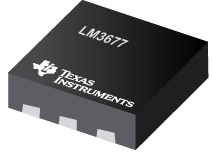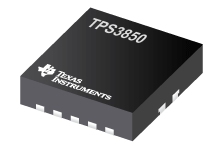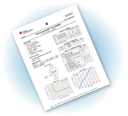ISO 13857, the new standard for machinery safety distances
12th June 2008
Source:
Procter Machine Guarding
Machine designers in the UK and Europe are familiar with designing guarding in accordance with the requirements of EN 294, 'Safety of machinery - Safety distances to prevent danger zones being reached by the upper limbs,' but this standard has now been superseded and replaced by a European/International standard EN ISO 13857:2008, 'Safety of machinery - Safety distances to prevent hazard zones being reached by upper and lower limbs.' Furthermore, this standard also supersedes and replaces EN 811, 'Safety of machinery - Safety distances to prevent danger zones being reached by the lower limbs.' Of course, the British Standard equivalents of these three are BS EN ISO 13857:2008, BS EN 294:1992 and BS EN 811:1997.
Fortunately the new standard is, in essence, an amalgamation of the two previous standards, with all of the principles, tabulated data and safety distance unchanged. There has been some minor redrafting and renumbering of clauses, but this is little more than a tidying-up exercise.
There is no doubting that the new standard is essential when designing machine guards, but the standard's limitations must be borne in mind. For example, sub-clause 4.1.1 lists a number of assumptions, including:
- there is some contact with the reference plane while wearing shoes (use of high-soled shoes, climbing and jumping are not included);
- no aids such as chairs or ladders are used to change the reference plane;
- no aids such as rods or tools are used to extend the natural reach of the upper limbs.
In reality, a worker who makes the unwise decision to try clearing a jam without stopping a machine could well also decide to stand on something or use an improvised tool to do so. The standard is also based on anthropometric data and therefore it states: 'Because safety distances depend on size, there will be some people of extreme dimensions who will be able to reach hazard zones even when the requirements of this International Standard are complied with.' It is therefore crucial that guards are designed in the light of a formal risk assessment as well as the data contained in the standard.
Following the publication of BS EN ISO 13857 in April 2008, Procter Machine Guarding has revised its popular Safety Distance Calculator for establishing the required safety distances and heights of machine guards. As with the previous release, Version 2 is very intuitive, with drop-down menus from which users select the application risk level (high or low), the horizontal distance to the hazard and the height of the hazard. The calculator then automatically calculates and displays the required height for the protective structure. Additionally, the calculator gives the safety distances for slots, round, square and irregularly shaped apertures through which a person could reach.
The Safety Distance Calculator is based on a Microsoft Excel spreadsheet, though no knowledge of this software package is required. However, if users require further assistance with calculating safety distances, Procter Machine Guarding can either help directly or put users in touch with appropriate experts.
There is no doubting that the new standard is essential when designing machine guards, but the standard's limitations must be borne in mind. For example, sub-clause 4.1.1 lists a number of assumptions, including:
- there is some contact with the reference plane while wearing shoes (use of high-soled shoes, climbing and jumping are not included);
- no aids such as chairs or ladders are used to change the reference plane;
- no aids such as rods or tools are used to extend the natural reach of the upper limbs.
In reality, a worker who makes the unwise decision to try clearing a jam without stopping a machine could well also decide to stand on something or use an improvised tool to do so. The standard is also based on anthropometric data and therefore it states: 'Because safety distances depend on size, there will be some people of extreme dimensions who will be able to reach hazard zones even when the requirements of this International Standard are complied with.' It is therefore crucial that guards are designed in the light of a formal risk assessment as well as the data contained in the standard.
Following the publication of BS EN ISO 13857 in April 2008, Procter Machine Guarding has revised its popular Safety Distance Calculator for establishing the required safety distances and heights of machine guards. As with the previous release, Version 2 is very intuitive, with drop-down menus from which users select the application risk level (high or low), the horizontal distance to the hazard and the height of the hazard. The calculator then automatically calculates and displays the required height for the protective structure. Additionally, the calculator gives the safety distances for slots, round, square and irregularly shaped apertures through which a person could reach.
The Safety Distance Calculator is based on a Microsoft Excel spreadsheet, though no knowledge of this software package is required. However, if users require further assistance with calculating safety distances, Procter Machine Guarding can either help directly or put users in touch with appropriate experts.
Similar articles
More from Procter Machine Guarding
- Automated warehouse guarding designed, manufactured and installed 25th July 2011
- ISO 13857, the new standard for machinery safety distances 12th June 2008
- Free Risk Assessment Calculator redesigned in line with new standard 10th March 2008
- Free guide to the new Machinery Directive 10th March 2008












Write a comment
No comments